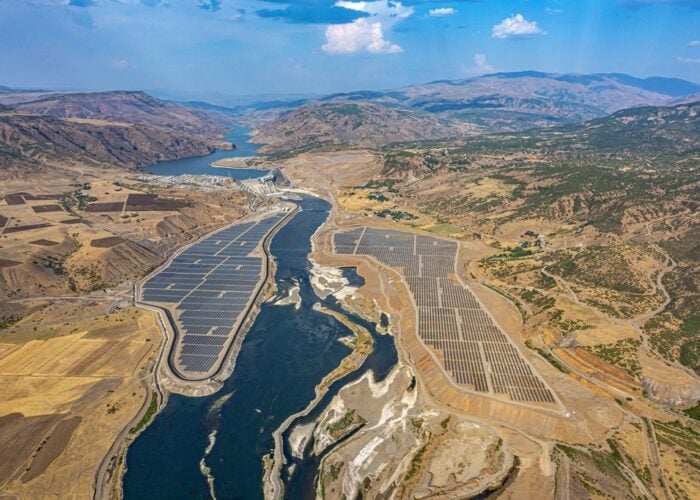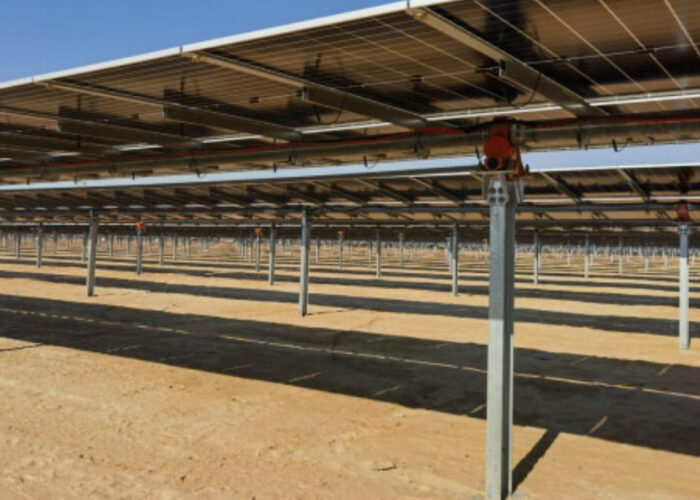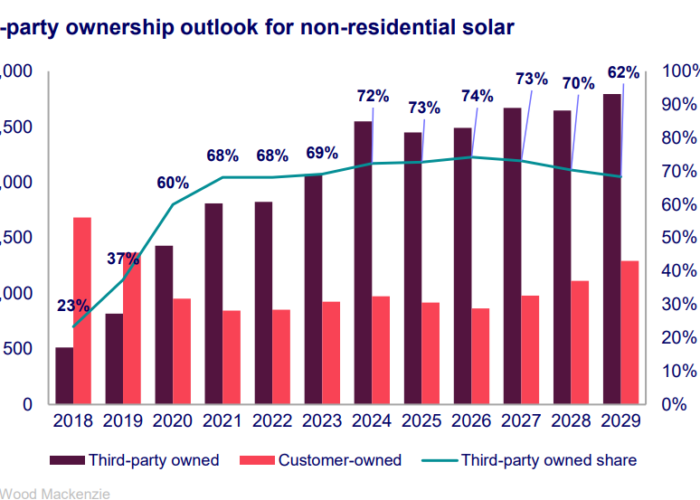
In October, Turkish energy minister Alparslan Bayraktar said Turkey will need to install 5GW of solar and wind capacity every year until 2035, as renewables have great potential to meet the country’s 2035 target of ‘supplying reliable and affordable energy in an environmentally friendly manner’.
According to Turkey’s National Energy Plan, the installed power capacity in 2020 was 95.9GW, and it will increase to 189.7GW by 2035. The share of renewables in the installed capacity, which was 52% in 2020, will reach 64.7% by 2035. Solar PV will play a key role in supplying power in Turkey by 2035, as its capacity will increase to 52.9GW, and wind power’s capacity will reach 29.6GW, including 24.6GW onshore and 5GW offshore.
Unlock unlimited access for 12 whole months of distinctive global analysis
Photovoltaics International is now included.
- Regular insight and analysis of the industry’s biggest developments
- In-depth interviews with the industry’s leading figures
- Unlimited digital access to the PV Tech Power journal catalogue
- Unlimited digital access to the Photovoltaics International journal catalogue
- Access to more than 1,000 technical papers
- Discounts on Solar Media’s portfolio of events, in-person and virtual
For other renewable energy sources, hydroelectric power plants will reach an installed capacity of 35.1GW, and 5.1GW in geothermal and biomass power plants.
The National Energy Plan also states that the share of renewable energy sources in primary energy consumption will increase to 23.7% by 2035, up from 16.7% in 2020.
“We need to find the right balance between supplying reliable energy and, at the same time, having competitive energy prices,” Bayraktar says.
The Turkish solar market
“The goal of adding 5GW of solar and wind capacity every year is certainly ambitious in the short term by 2027, but achievable in the medium (post-2027) and long run (post-2032),” says Rystad Energy analyst Nishant Kumar.
Over the last six years, solar PV’s installed capacity increased significantly, up from 1GW in 2016 to about 9.5GW at the end of last year, representing an average compound annual growth rate (CAGR) of 45.5% throughout the period, according to Kumar.
The primary installations came from the rooftop and commercial and industrial sectors (78%) due to the net metering scheme introduced in 2018, which allows households and businesses to sell surplus electricity to the grid and get benefits.
In May, the Turkish authority announced new feed-in tariffs (FITs) for renewables projects, including solar, coming online between 2021 and 2030. Kumar says the feed-in tariffs of TRY1.06/kWh (US$0.037/kWh) for solar PV systems can offer better prices to the developers.
According to European solar trade body SolarPower Europe, Turkey is the world’s fourth biggest solar manufacturer, with around 8GW of annual production capacity in 2022.
“With a manufacturing capacity of around 8GW, Turkey can reach the goal of adding around 3-3.5GW of solar a year,” says Kumar.
In 2020, the Turkish government introduced new rules for solar module imports. The new rules stated that the import duty on solar modules would be calculated per kilogram of US$25 rather than by a square metre of US$300. However, the government updated import duties earlier this year, increasing the import duty of solar PV cells that are not combined into a module or arranged in panels to US$60 per kilogram.
Kumar comments: “This could favour Turkish domestic manufacturers as high-efficiency modules are generally now heavier than they were a few years ago.”
Turkey’s solar potential
Turkey receives a high level of solar irradiance. According to the World Bank Group, the majority of Turkey boasts a solar power PV potential of 1400 – 1800kWh per year, especially in its southern and southeastern regions such as Konya, Ankara, Antalya, Kayseri, Adiyaman.
Against this backdrop, Turkey also boasts some other factors that could spur the growth of solar PV.
“Turkey is experiencing a rising need for electricity due to its expanding economy and growing population. Solar energy has the potential to play a significant role in fulfilling this increasing demand for clean and reliable power,” Kumar says.
As of the end of December 2022, Turkey’s population reached 85.3 million. The country’s estimated gross domestic product in 2023 will reach US$3.61 trillion, up from US$3.35 trillion in 2022.
“Overall, Turkey’s solar potential is massive. Big population, growing energy demand and attractive irradiance rates boost the outlook,” says Daniel Tipping, senior research analyst at Wood Mackenzie.
Challenges of the Turkish market
However, there are still challenges to meet the renewables target set by the Turkish government.
“One of the major challenges is ensuring that the necessary infrastructure is in place to support such a large-scale solar capacity addition. The grid must be able to handle the influx of renewable energy. Therefore, upgrades or expansions may be necessary,” says Turkish inverter manufacturer Solplanet’s spokesperson.
The spokesperson adds that securing financing for the large-scale development of solar systems is another challenge.
“To achieve the government’s renewables target, attractive investment opportunities and financial products available to support developers and end-users are crucial.”
Kumar also says that the Turkish government should streamline the process of permitting and obtaining licences as this could facilitate faster project development.
In February 2023, a 7.8 magnitude earthquake struck southern and central Turkey, causing more than 50,000 deaths and 100,000 injuries. Although Solplanet says solar market growth was disrupted in the affected area involving 11 cities, the Turkish Solar Energy Industry Association and the Energy Investors Association teamed up to send about 12,000 solar modules to regions hit by the earthquake in southern Turkey.
The modules were used to generate power for lighting, partial heating, telephone chargers and refrigerators, according to multiple news reports.
“The earthquake posed significant challenges, but the installations in the rest of the country continued as usual. On the other hand, the unfortunate event increased the interest in decentralised energy solutions,” Solplanet says.
“It doesn’t seem to have had a dramatic impact on solar deployment. Around 1.5GW was installed in the first ten months of this year, around the same level installed in all of 2022,” Tipping adds.







